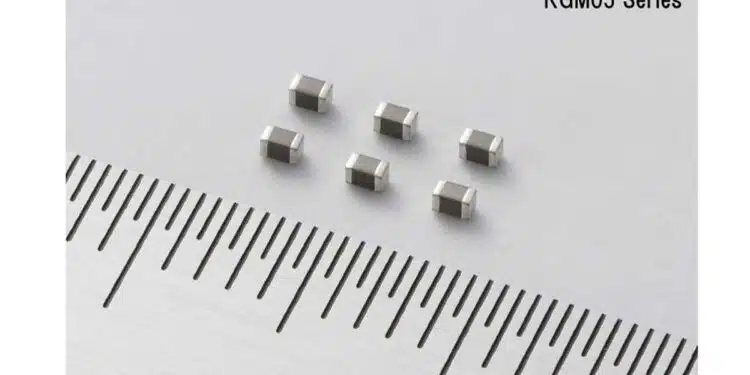KYOCERA AVX, a leading global manufacturer of advanced electronic components engineered to accelerate technological innovation and build a better future, has successfully developed the world’s first*1 compact, high-capacity multilayer ceramic chip capacitor (MLCC) with an industry-leading capacitance value of 47µF in the 0402-inch size*2 (1.0mm x 0.5mm).
Mass production scheduled to start in December 2025.
The rapid evolution of artificial intelligence (AI) technology is driving a surge in demand for smartphones equipped with generative AI and AI servers.
Additionally, as data processing technology becomes more advanced, the number of integrated components is increasing. Consequently, there is a growing need for ultra-compact components that allow for efficient component mounting within limited board space.
In the case of MLCCs, which are extensively used in these electronic devices, there is a strong expectation for further miniaturization and increased capacitance. At the same time, there is a demand for high reliability in components used in harsh temperature environments due to heat generation and other factors.
The ‘0402-inch size’*2 MLCC developed by our company is the most widely adopted size for smartphones and wearable devices. Through KYOCERA AVX’s unique material and process technologies, we have achieved further thinning of the dielectric and internal electrodes, successfully expanding the capacitance per unit by approximately 2.1 times compared to our previous product (22μF) of the same size.
This contributes significantly to securing the necessary capacitance and reducing the number of components. Moreover, high heat resistance up to +105°C ensures high reliability in harsh temperature environments, such as AI servers.
KYOCERA AVX will continue to advance product development in its electronic components business to meet market needs, contributing to the miniaturization and enhanced functionality of devices such as smartphones and AI servers.
| KGM05DR50G476MH | KGM05DR50E476MH | KGM05DS60E476MH | |
|---|---|---|---|
| Size(L×W) | 1.0mm×0.5mm(T 0.8mmMax.) | ||
| Capacitance | 47μF | ||
| Capacitance Tolerance | M(±20%) | ||
| Operating Temperature Range | -55 to 85℃ | -55 to 105℃ | |
| Temperature Characteristics | X5R(EIA) | X6S(EIA) | |
| Rated Voltage | 4Vdc | 2.5Vdc | 2.5Vdc |
| Mass Production Launch Date | Scheduled for December 2025 | ||
- *1 Regarding MLCCs in the ‘0402’ size. As of February 2025, according to Kyocera’s research
- *2 EIA Inch Code































